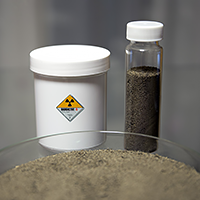Hi there, after some time I am back again. As can be clearly seen from the previous article, we live in a country heavily affected by nuclear accident in Chernobyl [1,2] (Image 1). Target chosen for today experiment is ordinary soil taken at the place where I live. I was curious whether it will be possible to measure activity of Cs-137 in common soil sample, thrown to a gamma spec without any special pretreatment.
Anyone who is interested in pollution with radio-cesium knows that despite original expectations, Cs-137 clears from the environment very slowly. According to many scientific publications, most of the Chernobyl contamination in Europe is still present in upper layer of the soil to a depth of approximately 10 cm, depending on the bedrock character. Higher concentration in the surface layer can be expected in clay rich soils and at the places without cultivation / plowing. This behavior is caused mainly by retention of cesium with clay minerals in some soil types and by biocirculation due to cesium similarity to biogenic potassium [2,3,4]. Thus higher remaining concentration can be expected in forest ecosystems, meadows, etc.
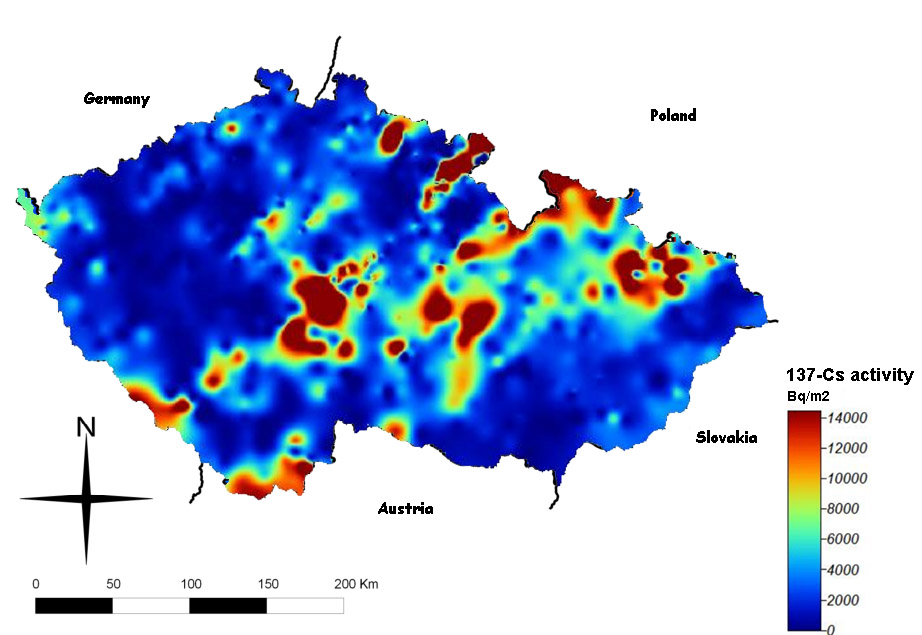
Image 1. Surface contamination of the Czech Republic with Cs-137 due to the accident at Chernobyl NPP. Sampling carried out from 1.5. 1986 (909 values). Source: National Radiation protection Institute of the Czech Republic [5].
Based on the abovementioned facts, I decided to take a sample of soil at a lawn in front of our house (Sampling point 1) and at a lawn of a house, where my wife's grandma lives (Sampling point 2). Distance between these two places is approximately 14 km (Image 2). At these locations I can be pretty sure that there has not been done deep plowing or anything similar in past 40 years.
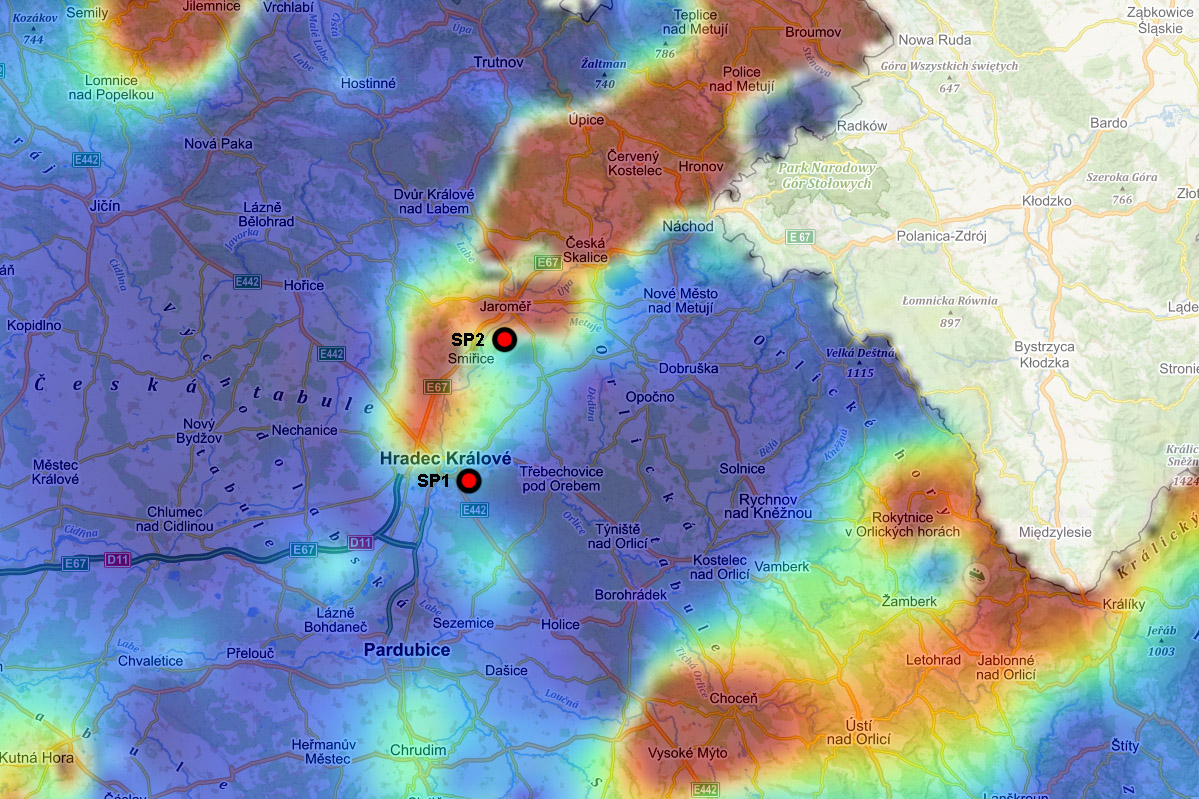
Image 2. The map with my sampling points and projected data of Cs-137 contamination (Source:National Radiation protection Institute of the Czech Republic [5]).
Sampling and sample preparation was quite straightforward. After grass removing from an area with diameter of approximately 15 cm, I taken first 10 cm of soil and sieve it through the 0.5 mm mesh. After drying and mixing, 260 grams of the soil was placed into a plastic sample container, where it waited for the measurement.
My expectations about the signal strength were not high, so as a first thing I collected background gamma spectrum for 48 hours. After that I placed plastic container with the soil sample from the Sampling point 1 (Image 2) to a lead shielding and collected spectrum for 39 hours. As I correctly expected, signal was quite low, but peak of Cs-137 at 662 keV unequivocally popped out from the background (Image 3). After that I placed second sample (Sampling point 2) to the lead castle and started new measurement. What was my surprise, when I saw quite big peak of Cs-137 after overnight signal integration. In order to follow the same measurement conditions, I left the sample in the spectrometer for another 27 h and obtained 39 hours of integrated signal as in the case of first sample. Results and comparison of all measurements are presented at Image 4.
| Sample 1 | Soil 260 g (Sampling point 1, N 50°12', E 15°51' ) |
| Sample 2 | Soil 260 g (Sampling point 2, N 50°19', E 15°54') |
| Gamma spectrometer | Scintillix SCGS-01 |
| Scintillation probe | NaI(Tl) 3" |
| Integration time | 140400 (39 h) |
| Background correction | Yes |
| Shield | Lead |
| Software | Theremino v.7.2 |
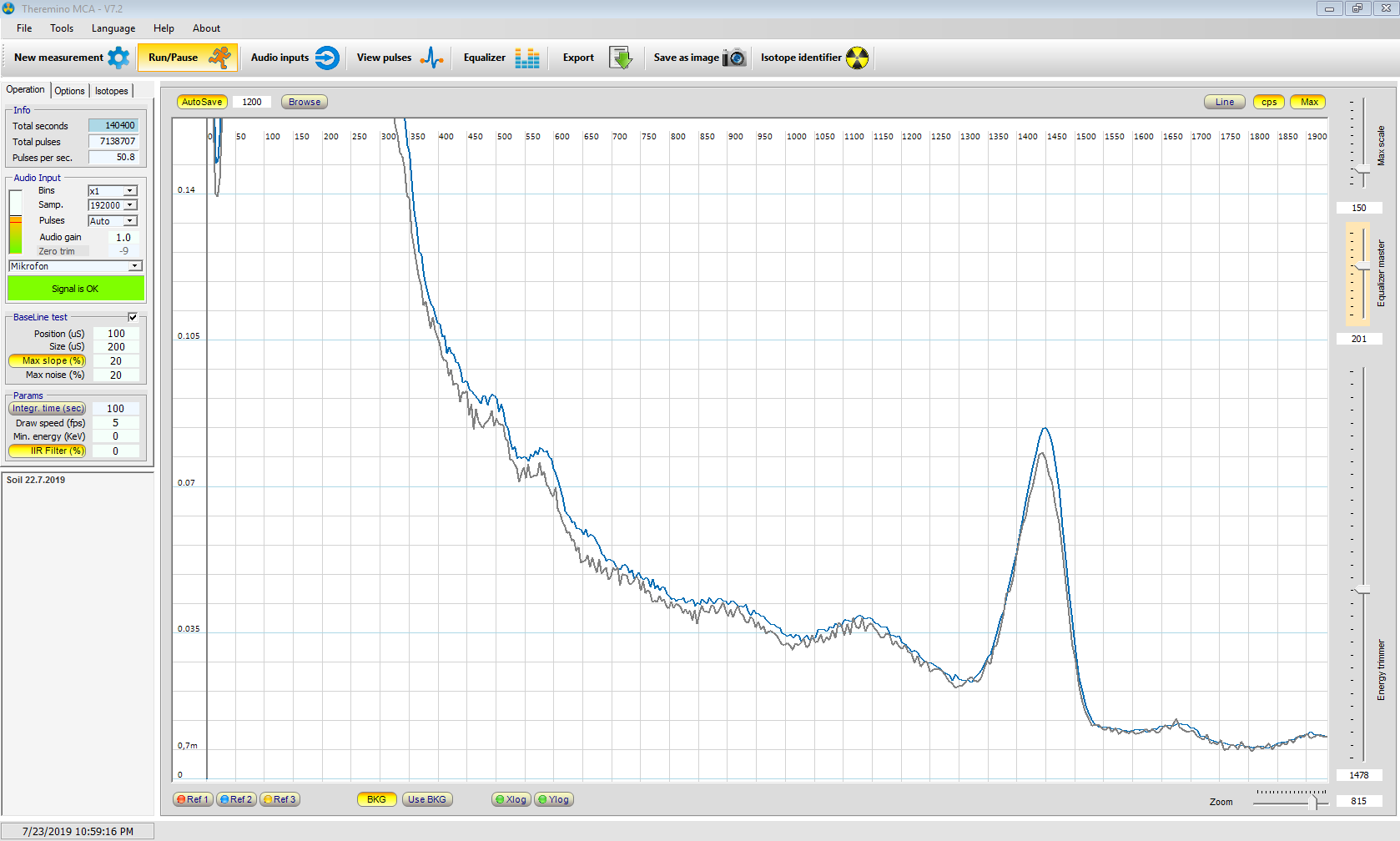
Image 3. Raw gamma spectrum of the background and of the soil (260 grams, Sampling point 1).
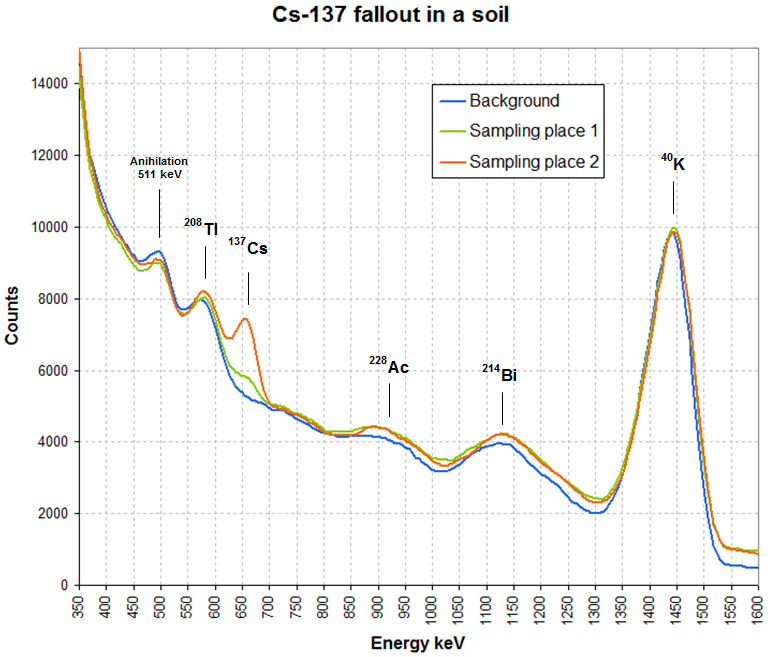
Image 4. Processed gamma spectrum (convolution by moving average, n=7). Besides the peak of Cs-137, some radionuclides of natural origin like Ac-228 (Th-232 decay serie), Bi-214 (U-238 decay serie) and K-40 was found as well.
| PLACE | Total CPS |
| Background | 48.3 |
| Sampling point 1 | 50.8 |
| Sampling point 2 | 52.6 |
So if we take a look at the results, there is pretty big difference in activity of Cs-137 in upper layer of the soil even in the case that distance between sampling points is not so high. It corresponds to the data obtained by National Radiation protection Institute (Image 1, Image 2), demonstrating high difference in spatial distribution of the Cs-137 contamination which is related to movement of air masses and amount of rainfall within few weeks after Chernobyl NPP accident. What is also obvious from the Image 2 is the fact that my sampling was done at the places, which are just on the border of the areas with highest contamination. If I will have a car trip across the most affected areas I will definitely take another sample of a soil.
So what to say at the end? I did not find anything surprising. Contamination caused by the experiment which went wild thanks to comrade Dyatlov and other “Soviet geniuses” is still present in our environment. Contamination of upper layer of the soil to the depth of 10 cm with Cs-137 is not in insignificant concentrations even after more than 30 years.
References:
[1] Monitoring of post-Chernobyl contamination in the Czech Republic. Bucina I., Drabova D., Kunz E., Malatova I. (Article in English) Link
[2] Long-term ¹³⁷Cs activity monitoring of mushrooms in forest ecosystems of the Czech Republic. Škrkal J., Rulík P., Fantínová K., Burianová J., Helebrant J. Radiat Prot Dosimetry. 2013;157(4): 579-84. (Article in English) Link
[3] Artificial environmental radionuclides in Europe and methods of lowering their foodstuff contamination. Benova K., Dvorak P., Tomko M., Falis M. Acta Vet. 2016, 85: 105-112. (Article in English) Link
[4] Vertikální distribuce Cs-137 v neobdělávaných půdách. Hajek D. Bachelor’s thesis; 2014 (Article in Czech) Link
[5] Mapa kontaminace půdy České republiky cesiem-137 po havárii JE Černobyl. Rulik P., Helebrant J. National Radiation protection Institute; 2011; (Article in Czech) Link

